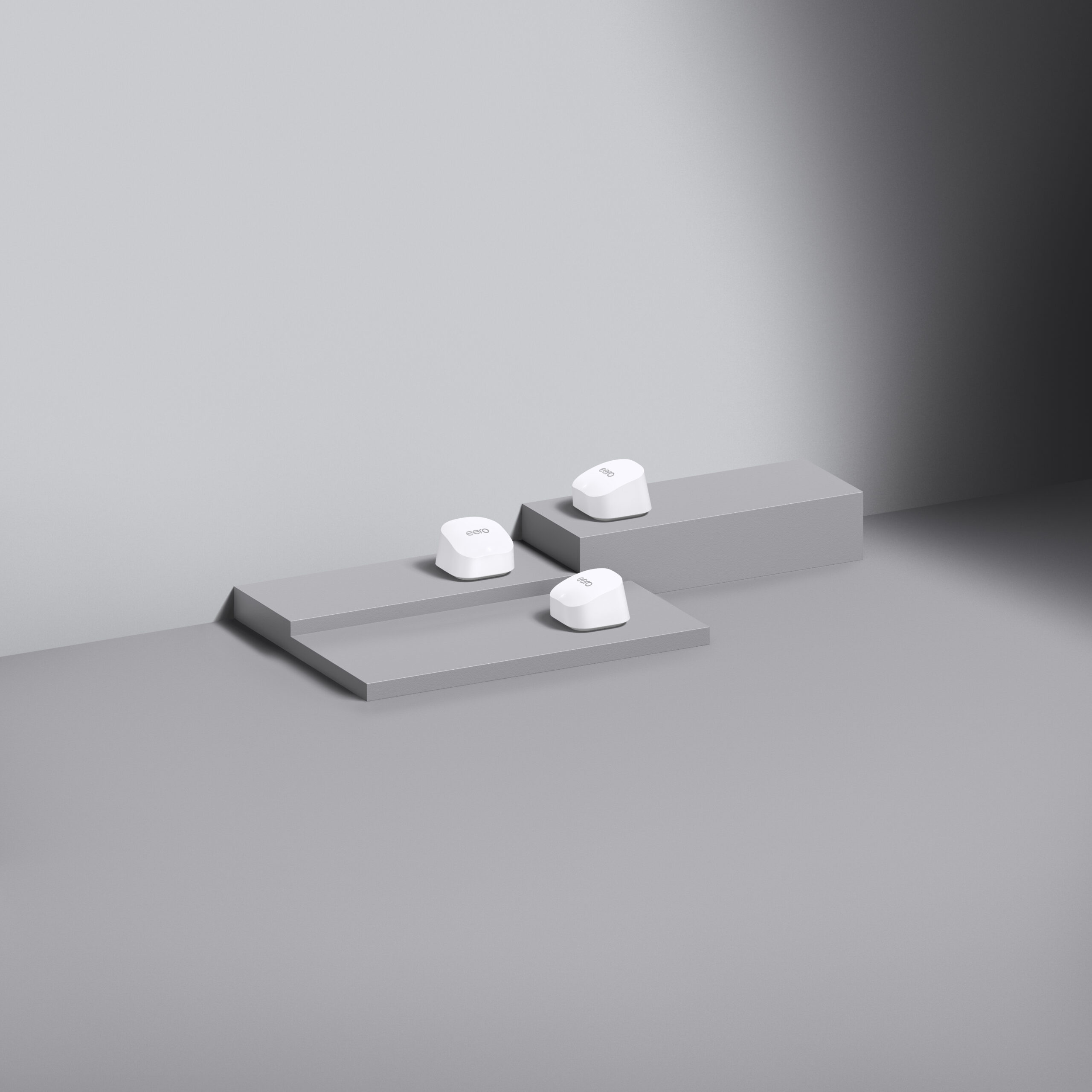Executive Summary
This case study examines the success of eero mesh network devices within a large 5-bedroom family home split across 3 floors. It will examine the current connectivity challenges within the home (size, walls and concrete floors), look at plausible solutions and implementation of the most viable solution – three eero 6+ mesh network devices. The results of two speed tests showed that the eero mesh network devices made a significant impact on total Wi-Fi coverage across the home at consistent speeds on every floor.
Quick links within the post:
Background
In many homes, modems are in one central location that ideally beams Wi-Fi throughout the home giving all residents access to the internet. Unfortunately, poor Wi-Fi coverage is a consistent issue with many homes whereby coverage in the main area of the modem is strong; however, in more distant parts of the house, wi-fi signals are weak or non-existent.
There are several factors that can impact the quality of connection throughout the house, including brick walls, varying floor levels (upstairs and downstairs) the proximity of the area of use to the modem location. All these factors can impact how strong the Wi-Fi connection is, and ultimately, if the connection is poor, the end user will experience slow speeds resulting in buffering for streaming or gaming and long load times for webpages or video calls getting cut off.
Case Evaluation
A large 5 bedroom home (~260 square metres) with the modem located on the middle floor (main open plan living area), away from all bedrooms located on the top and bottom floors. All floors are built on solid concrete slabs with brick walls separating the living areas from the stairwell and bedrooms.
There are several factors that cause poor Wi-Fi coverage in the home. They include the router’s signal reach, brick walls and the location of the modem.
Modem signal reach
All modems have a maximum coverage size. For example, eero 6+ devices have a reach of ~140 square metres. In this home of an ~260 square metres, the signal of one device is insufficient.
Brick walls
Over here in the west of Australia, walls are constructed with concrete bricks and rendered, making them harder for a Wi-Fi connection to penetrate. In this particular home, all walls are bricked and rendered, separating the living areas from the bedrooms.
Modem location
The modem is plugged into the telephone jack located on the middle floor that contains all the living areas of the home.
Possible Solutions
There are a number of possible solutions offered to overcome these challenges. They include:
- Choosing a central location for your modem
Central locations can provide the best signal coverage across a home. If you have a two-story home, place your router on the first floor in a high spot, i.e. on top of the shelf, to provide a stronger signal for devices on the second floor.
- Replace the antenna on your modem
Most routers have omnidirectional antennas, meaning they broadcast Wi-Fi in all directions. If you replace the omnidirectional antenna with a high-gain antenna, you can aim the router’s wireless signal in the direction you want. - Add a wireless repeater
These devices take the Wi-Fi signal that comes from the main access point and repeats it. This expands Wi-Fi coverage across the home. - Use equipment from the same manufacturer
Despite the advancements we see in interoperability, sometimes routers and network adapters from different manufacturers work together, but can sometimes performance is enhanced when devices are produced by the same manufacturer.
Implementation
In this case, 3 eero devices (eero 6+) were used throughout the home. Similar to the diagram below, the main device that acted as the modem was placed in a central location in the main living area (dining of open planned living space), with repeater devices located upstairs and another downstairs on the wall of the hallways to ensure adequate coverage of the top and bottom floors.
Each eero device can reach up to ~140 square metres, and in a ~260 square metre home, the eero’s were placed in equal proximity to rooms giving full Wi-Fi coverage to devices on the same floor.
The speed test revealed that the eero repeater devices expanded the coverage across the house, returning consistent download and upload speeds across all three floors.

Conclusion
Home Wi-Fi is a staple of every household. With so many people working from home, streaming, and gaming moving online, a good connection is directly related to a better user experience. Many factors, however, can influence the quality of the Wi-Fi: the modem signal reach, common obstructions and modem location. Some of the possible solutions that can address these issues include: choosing a central location for your modem, replacing the router’s antenna, adding in a wireless repeater and using the same manufacturer for routers and adapters. The solution implemented was a combination of most of the possible solutions listed above using 3 eero mesh network devices (eero 6+) throughout the home. A speed test was conducted to ensure the eero devices worked in the desired way, expanding the Wi-Fi across the home.
Want to expand the Wi-Fi in your home? Find out more about eero 6+ with Leaptel.

